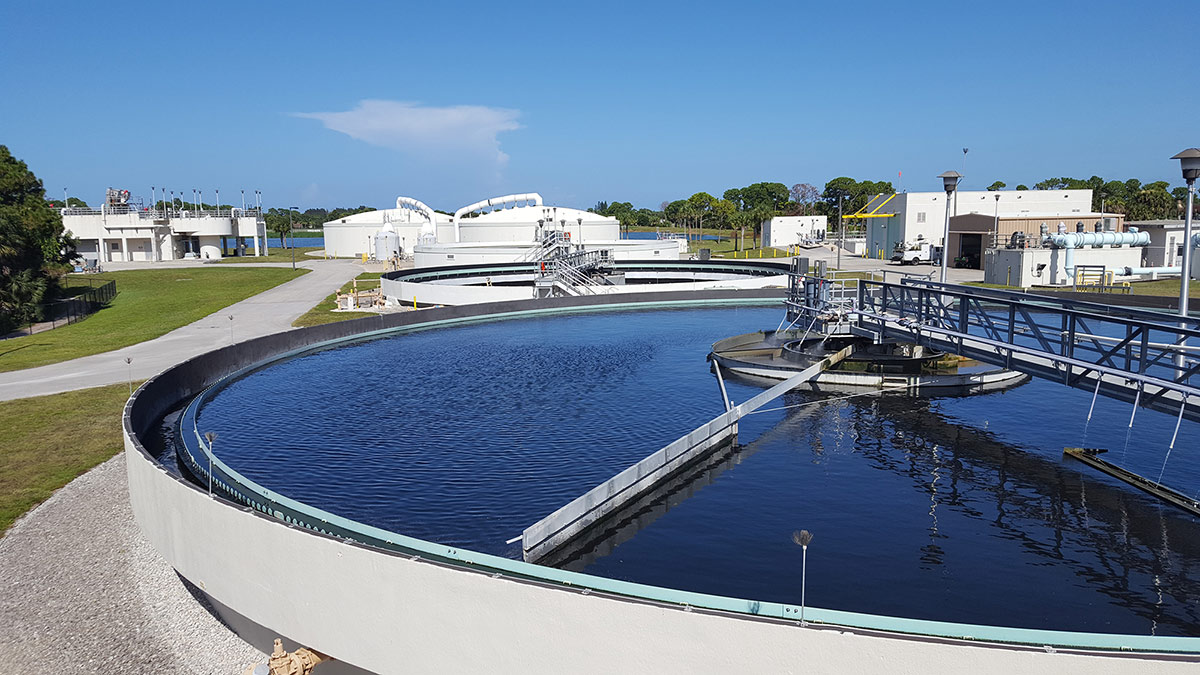Innovative Approaches to Waste Water Treatment Technologies
Innovative Approaches to Waste Water Treatment Technologies
Blog Article
Strategic Approaches to Boost Waste Water Treatment Efficiency and Reduce Ecological Impact
In the realm of drainage treatment, the mission for enhanced efficiency and minimized ecological impact is a continuous difficulty that requires tactical solutions. As society faces the critical to handle water sources sustainably, a nuanced technique comes to be vital. The integration of innovative treatment technologies, energy-efficient processes, resource recovery strategies, boosted nutrient elimination methods, and clever surveillance and control systems stands for a multifaceted framework for dealing with these pushing problems. What exists at the core of this facility web of approaches is the prospective to change the means we approach waste water treatment, not just as a process of disposal, but as a valuable chance for advancement and environmental stewardship.
Advanced Treatment Technologies
Advanced membrane layer purification systems have actually reinvented innovative wastewater treatment processes, dramatically enhancing the elimination of contaminants. These cutting-edge systems function forcibly water through a semi-permeable membrane layer, successfully separating pollutants from the water stream. The membrane's tiny pores trap toxins such as bacteria, viruses, and suspended solids, permitting just purified water to pass through. This innovation has shown to be highly efficient in getting rid of a large range of contaminants, consisting of drugs, heavy metals, and natural compounds, which are usually challenging to remove with standard therapy techniques.
Furthermore, membrane filtration systems provide many benefits over traditional treatment strategies. They need much less room, produce higher-quality effluent, and are extra resistant to changes in influent water top quality. Furthermore, these systems are highly versatile and can be quickly incorporated into existing therapy plants or made use of as standalone units for decentralized applications. As the need for clean water proceeds to increase, the fostering of sophisticated membrane layer purification technologies is necessary to guarantee sustainable and efficient wastewater treatment techniques.
Energy-Efficient Processes
The assimilation of energy-efficient processes in wastewater treatment systems is important for maximizing resource utilization and reducing operational prices. One essential method to improving power performance in wastewater therapy is the usage of innovative oygenation systems, such as fine bubble diffusers or surface aerators, which can improve oxygen transfer efficiency and reduce energy consumption.
Additionally, enhancing procedure control and automation via the usage of sophisticated sensing units and monitoring systems can improve general energy efficiency by adjusting procedures in real-time based on actual demand and conditions. Implementing power audits and frequently monitoring energy efficiency indicators are necessary techniques to identify areas for renovation and track energy-saving campaigns successfully. In general, the adoption of energy-efficient processes in wastewater therapy not only profits the atmosphere yet likewise adds to lasting expense financial savings and operational sustainability.
Source Recuperation Techniques
With a focus on maximizing resource utilization and sustainability in wastewater treatment systems, the application of source recuperation approaches arises as a crucial element in improving functional effectiveness. Resource recovery methods in wastewater treatment include the identification and extraction of important resources from the waste stream, therefore transforming what was as soon as considered waste into a useful asset. By applying resource healing techniques such as nutrient removal and healing, energy generation from raw material, and the manufacturing of multiple-use water, wastewater treatment plants can lessen environmental impact while maximizing performance.

Improved Nutrient Elimination Methods
Applying sophisticated nutrient removal strategies is essential for optimizing the effectiveness of wastewater treatment systems. One of the essential strategies utilized for boosted nutrient removal is the process of biological nutrient removal (BNR), which my review here includes the elimination of nitrogen and phosphorus through biological procedures.

Along with BNR, progressed treatment techniques such as membrane bioreactors (MBRs) and built marshes can additionally be employed to boost nutrient removal efficiency. MBRs make use of membranes to accomplish top quality effluent standards by successfully eliminating nutrients and put on hold solids. Built wetlands mimic all-natural wetland processes to remove nutrients through plant uptake, microbial activity, and sedimentation. By integrating these innovative nutrient removal methods into wastewater treatment towns, systems and markets can successfully reduce nutrient contamination and shield the environment.
Smart Monitoring and Control Equipment
Using innovative technology, the integration of wise surveillance and control you could try these out systems changes the functional efficiency of wastewater therapy centers. These systems include innovative sensors and information analytics to continuously keep track of essential parameters such as pH degrees, turbidity, liquified oxygen, and circulation rates in real-time. By collecting and examining this data, drivers can obtain beneficial understandings right into the efficiency of the treatment procedures, allowing aggressive changes to maximize therapy effectiveness.
Smart surveillance and control systems additionally support remote surveillance abilities, allowing drivers to access real-time data and control functions from off-site areas. This remote access improves operational versatility and responsiveness, enabling swift interventions in case of system breakdowns or fluctuations in influent quality. Furthermore, the predictive upkeep abilities of these systems help protect against devices failures and reduce downtime, inevitably boosting the overall reliability of wastewater therapy procedures (Waste Water Treatment).
Final Thought
Finally, calculated strategies such as sophisticated therapy technologies, energy-efficient processes, source healing methods, boosted nutrient elimination strategies, and wise surveillance and control systems play an important role in enhancing wastewater therapy performance and minimizing environmental effect. By implementing these strategies, wastewater treatment plants can enhance their total performance, minimize energy intake, recover important resources, and guarantee conformity with ecological laws. These strategies are important for effective and lasting wastewater management practices.

In final thought, tactical go to this website methods such as sophisticated therapy innovations, energy-efficient procedures, source recovery techniques, boosted nutrient elimination techniques, and wise tracking and control systems play an important function in enhancing wastewater therapy efficiency and decreasing ecological influence.
Report this page